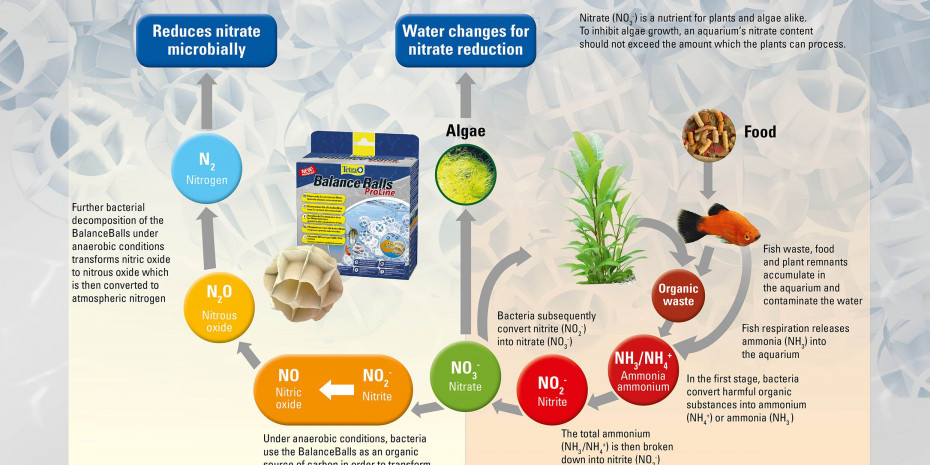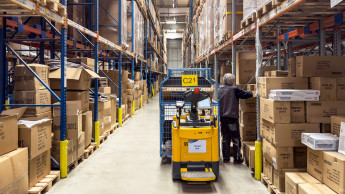The protein metabolism of fish and other degradation processes caused by food and plant residues mean that ammonium and ammonia are released constantly into the aquarium water. Without any functioning biodegradation system, the level of toxic ammonia present would soon increase. The nitrifying bacteria that live in the aquarium filter in particular ensure that toxic ammonia and ammonium are quickly broken down, first into nitrite, which is also toxic, and finally into harmless nitrate. This process of nitrification is the first stage in the nitrogen cycle (see illustration) and creates healthy water conditions along with a biologically active living space for the aquarium's inhabitants. Although the nitrate produced is harmless to fish and is an important plant nutrient, it also provides nutrition for algae. The nitrate content in the aquarium water normally increases over time if suitable action is not taken, such as regular water changes. If the nitrate concentration is too high, this can encourage undesirable algae growth.
Balls in the aquarium
The second stage of the nitrogen cycle is so-called denitrification to reduce the nitrate level, a job that is done by special microorganisms that break down nitrate. These denitrifying bacteria break the nitrate down into molecular nitrogen, thus depriving algae of a source of nutrients. The biochemical process of denitrification has been known about for a long time, and the assumption hitherto was that denitrification only takes place in an aquarium environment that has low levels of oxygen or is oxygen-free. Such a condition facilitating a significant nitrate breakdown can only be achieved in a motor-driven external filter by slowing down the flow of water to a considerable extent; however, this would destroy the nitrification process operating in parallel, as the nitrifying filter bacteria require a lot of oxygen and consequently a rapid flow of water.
Up to now, no universally applicable solution to these contrary filter conditions has exist-ed for standard external filters, but Tetra has now introduced one with its BalanceBalls ProLine product. These can be used in any commercially available external filter and offer a surface for the creation of a biofilm on which the denitrifying bacteria can colonise. The substrate itself consists of readily available carbon that the denitrifying bacteria use as a source of nutrition, metabolising this carbon together with the oxygen from the nitrate. The nitrate is…
Up to now, no universally applicable solution to these contrary filter conditions has exist-ed for standard external filters, but Tetra has now introduced one with its BalanceBalls ProLine product. These can be used in any commercially available external filter and offer a surface for the creation of a biofilm on which the denitrifying bacteria can colonise. The substrate itself consists of readily available carbon that the denitrifying bacteria use as a source of nutrition, metabolising this carbon together with the oxygen from the nitrate. The nitrate is…

 Menü
Menü








 5/2015
5/2015









 Newsletter
Newsletter